Incorporating Live Crawfish into Your Aquarium Ecosystem
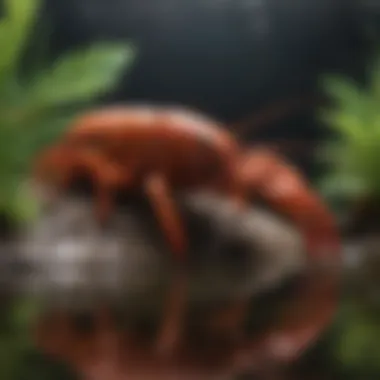

Intro
Integrating live crawfish into your fish tank offers an intriguing dimension to aquarium keeping. Crawfish are not just visually captivating; they also play a role in maintaining a balanced ecosystem within your tank. This section will provide an overview of the importance and considerations of incorporating these fascinating creatures into your aquatic environment.
Crawfish, often referred to as crayfish, can provide biological benefits. They help in breaking down detritus, thus contributing to the natural cleaning process of your aquarium. Their unique behavior can also add an element of dynamism that many aquarists find appealing. However, understanding their needs is vital for ensuring a healthy coexistence with other aquatic life.
Pet Care and Grooming
Importance of Regular Care
Crawfish require consistent attention to thrive in an aquarium setting. Routine monitoring of water quality is crucial. Parameters such as pH, ammonia, and nitrate levels should be regularly assessed to ensure a suitable environment. Additionally, changing water periodically can help minimize the buildup of harmful substances.
Regular feeding is also important. Although crawfish are scavengers, ensuring they receive a balanced diet will promote their health. A proper feeding schedule, along with appropriate portion sizes, will help maintain their vitality.
Grooming Techniques
While crawfish do not require typical grooming like fur pets, keeping their living space clean is essential. This means removing uneaten food, dead plants, or other organic matter from the tank. Use a siphon for substrate cleaning and ensure that decorations do not harbor waste, as this can affect water quality.
Tools and Products Recommendations
Investing in basic aquarium care tools can simplify maintenance. Here are some suggested items:
- Water testing kits: Essential for monitoring water quality.
- Aquarium vacuum: Useful for substrate cleaning.
- Gravel siphon: Improves water clarity during partial changes.
- Fish net: Helps in managing crawfish during tank cleanings.
Seasonal Care Tips
As seasons change, so do the needs of your crawfish. During hotter months, ensure that your tank remains at a stable temperature. Crawfish are sensitive to heat fluctuations. Implement cooling methods if necessary. In colder seasons, monitor the temperature to keep conditions adequate for their survival.
Health and Nutrition
Understanding Pet Nutrition
Crawfish have specific dietary needs. They thrive on a variety of foods, including algae, plant matter, and high-quality pellets designed for crustaceans. Supplements like spirulina can also enhance their nutrition. Consistency and variety in diet are key to their health.
Common Health Issues by Species
Each crawfish species has its own vulnerabilities. For instance, many are prone to molting issues. Ensuring a calcium-rich environment promotes proper molting. Pay attention to any signs of disease, such as lethargy or discoloration, as these can indicate underlying health problems.
Preventive Care and Regular Check-Ups
Regular observation of your crawfish can prevent health issues from escalating. Check their behavior, feeding patterns, and physical appearance. Sanitation and water quality checks should be routine aspects of your aquarium care.
Food and Dietary Advice
Balance in diet is essential. Avoid overfeeding, as this can lead to water quality issues. In general, offering several small meals rather than one large feeding will help prevent leftover waste.
Behavioral Training
Basics of Positive Reinforcement
Despite not being a domesticated pet, crawfish can exhibit a level of trainability. Positive reinforcement can be applied through consistent feeding routines and enriched environments that encourage natural behaviors.
Training Techniques Users Can Apply
Interaction should be minimal to maintain their comfort levels. Introducing hiding places and plants can stimulate their natural behaviors without direct handling, reducing stress.
Managing Behavioral Issues
When observing aggression or territorial behavior among crawfish, space is often the solution. Ensure that there are ample hiding spots and room to roam to mitigate potential conflicts.
Importance of Socialization
Although crawfish are primarily solitary creatures, they can coexist peacefully when their needs are met. Gradual introductions and careful observation can foster a more harmonious aquarium community.
Engaging Activities and Enrichment
Fun Games to Play with Your Pet
Though crawfish do not play in a traditional sense, enriching their environment can promote activity. Adding items that require exploration, such as tunnels and varied substrate textures, can create an engaging habitat.
DIY Toys and Activities
Creating simple DIY habitats with plants and stones can enhance their living space. This allows crawfish to forage naturally, promoting health and welfare.
Importance of Mental Stimulation
Mental stimulation is as crucial for crawfish as it is for other pets. Regular changes in the environment or introducing new structures can encourage exploration and reduce stress.
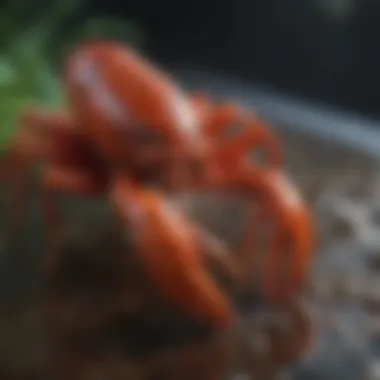
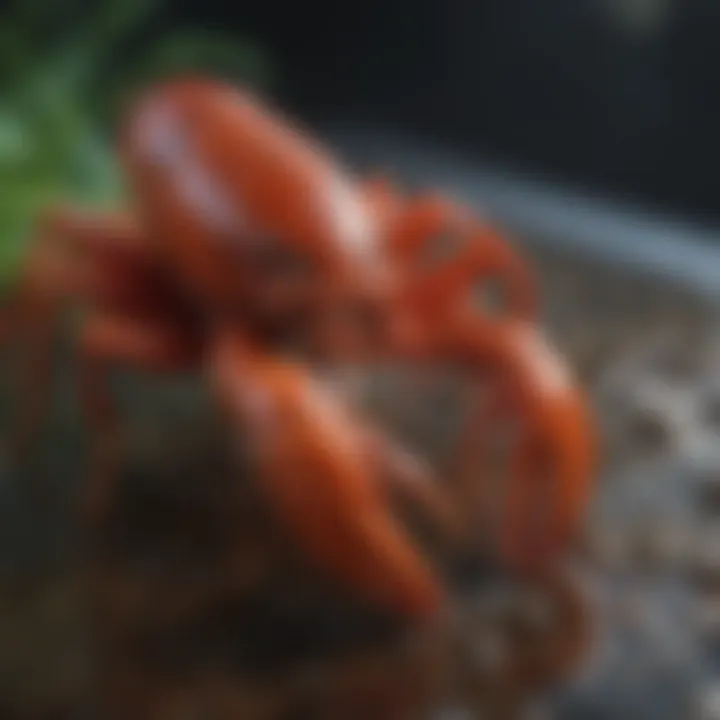
Outdoor Adventures and Exploration
If safe, you might consider creating a temporary setup in a controlled outdoor environment. Always ensure that the area is free from pollutants and predators before doing so.
Resources and Community Engagement
Recommended Books and Websites
Engagement with literature and reputable websites can deepen your understanding of crawfish care. Websites like Wikipedia and Britannica offer valuable insights.
Forums and Groups for Pet Owners
Joining forums such as Reddit focused on aquarists can be beneficial. You can learn from others’ experiences and ask questions.
Finding Local Services and Classes
Many aquarists benefit from local classes on aquarium management and species care. Researching community centers or dedicated pet stores can yield options where you can learn face-to-face about crawfish and aquatic ecosystem management.
Encouraging Community Sharing and Contributions
Sharing your experiences with crawfish care can foster a community of knowledgeable pet owners. Consider writing articles, posting in forums, or participating in local events to share insights and learn from others.
Foreword to Live Crawfish in Aquariums
Live crawfish have gained a unique position in the realm of aquariums. They are not only vibrant and engaging to observe but also serve several functions that can greatly enhance the aquatic ecosystem. This introduction sets the grounds for understanding why integrating live crawfish into an aquarium can be a beneficial choice.
Crawfish contribute to the ecological balance of their environment. They are scavengers and play a significant role in breaking down organic matter, thus helping maintain water clarity and quality. This aspect alone makes them appealing for many aquarists who desire a more dynamic and self-sustaining aquarium.
Additionally, the presence of crawfish offers an opportunity for deeper interaction with aquatic life. Their behaviors and interactions can be captivating for an observer, providing education about aquatic environments.
When considering the integration of crawfish into your aquarium, various factors must be addressed. This includes understanding their habitat requirements, dietary needs, and potential compatibility with other species. By delving into these elements, the following sections provide insights for both novice and experienced aquarists.
Understanding the Basics of Crawfish
Crawfish, also known as crayfish or freshwater lobsters, belong to the family Cambaridae. They inhabit freshwater environments, including streams, rivers, and lakes. Understanding their biology is crucial for anyone looking to keep them in an aquarium.
Typically, they exhibit a segmented body covered with a hard shell. This shell provides protection and must be shed regularly as the crawfish grows, a process known as molting. This behavior is significant to monitor, as it can indicate stress or poor water conditions.
Crawfish are opportunistic feeders. They consume detritus, algae, and insects in their natural habitat. Their capacity to adapt to varying conditions also makes them resilient, though suitable water parameters are necessary for their health in captivity.
The Appeal of Live Crawfish for Aquarists
The allure of keeping live crawfish goes beyond their ecological benefits. For aquarists, they present an opportunity to witness natural behaviors that are often absent in traditional fish-only displays.
Crawfish demonstrate fascinating territorial behaviors, especially during mating season. Watching them establish dominance and interact with one another can add a layer of complexity to aquarium life. This observation holds a particular charm for hobbyists.
Moreover, crawfish are generally hardy species that require less daily attention than more delicate fish. They can thrive in varied water conditions, making them suitable for beginners while still providing experienced aquarists a sense of satisfaction through their care.
Species of Crawfish Suitable for Home Aquariums
Understanding which species of crawfish are suitable for home aquariums is essential for both novice and experienced aquarists. Choosing the right species impacts the overall ecosystem of the tank, the compatibility with other aquatic life, and the ease of care needed. Each species comes with unique requirements and behavioral traits that can affect your aquarium's harmony. By exploring various species, aquarists can enhance their tanks, promote biodiversity, and ensure the well-being of their crawfish. The considerations for selecting the appropriate species will also play a critical role in maintaining a balanced aquatic environment.
Popular Species Overview
Some of the most popular species of crawfish that can thrive in home aquariums include the Red Swamp Crawfish, the Procambarus clarkii, and the White River Crawfish, known scientifically as the Procambarus acutus. Each species has its own traits and requirements:
- Red Swamp Crawfish: This crawfish is well-known for its striking red coloration. It can adapt to various water conditions but prefers a clean environment with plenty of hiding places.
- Procambarus clarkii: Often referred to as the Louisiana Crawfish, it is one of the most commonly kept species in aquariums. It grows quickly and is tolerant of a wide range of temperatures, making it a favorite among hobbyists.
- White River Crawfish: This species is known for its unique appearance and relatively calm nature. It thrives in slightly acidic to neutral water, making it suitable for many community tanks.
These species bring diversity and interest to any aquarium, transforming the aquatic landscape into a more dynamic ecosystem.
Endemic Species Considerations
When considering endemic species of crawfish, aquarists must think about their specific habitat requirements. There are many local varieties that may not commonly be found in pet stores but can provide unique value to aquariums. Here are some key points to remember:
- Local Adaptation: Endemic species may be more suited to your local water conditions, giving them a greater chance of thriving in your aquarium.
- Conservation and Sourcing: It is vital to source local species ethically. Removing them from their natural habitats can disrupt local ecosystems.
- Behavioral Traits: Understanding the local behavior and interactions of endemic crawfish can help you create a natural environment that maximizes their health and well-being.
It's important to research each species thoroughly before making a decision. Through careful selection, aquarists can create a thriving underwater community that reflects the rich diversity of local waterways.
Aquarium Setup for Crawfish
Creating the right environment for live crawfish is crucial for their health and well-being. Proper setup not only enhances the aesthetic appeal of your aquarium but also ensures a harmonious ecosystem where crawfish can thrive. Attention to specific elements like tank size, substrate, layout design, and water parameters will impact the long-term success of integrating crawfish into your aquatic scene.
Tank Size and Specifications
When choosing a tank for crawfish, size matters immensely. A larger tank, ideally a 40-gallon or more for several individuals, provides the necessary space for both the crawfish and other aquarium inhabitants. Moreover, it helps maintain stable water parameters, reducing the risk of rapid fluctuations typically seen in smaller tanks.
Crawfish are active creatures, known for their tendency to dig and explore. Therefore, a tall tank with ample floor space is recommended. A tank with a height of at least 18 inches allows for some vertical movement while still providing enough room for them to burrow.
Benefits of Adequate Tank Size:


- Stability: Larger volumes of water are better at buffering changes in pH, ammonia, and temperature.
- Reduced Stress: More space lowers competition, which can lead to less stress among crawfish and other aquatic species.
- Enhanced Viewing: A bigger tank allows for a more dynamic setup, showcasing the natural behaviors of crawfish.
Substrate and Layout Design
The substrate plays a pivotal role in the health of your crawfish. The right material should allow for burrowing and provide a natural habitat feel. A mix of sand, gravel, and fine substrate is often a good combination. Not only does this facilitate digging, but it also encourages beneficial bacteria growth, which aids in biological filtration.
Additionally, layout design is equally important. Creating hiding spots using rocks, driftwood, and aquatic plants can help establish territory, reduce aggression, and create a comfortable environment for crawfish. Remember that crawfish are territorial and will appreciate areas where they can feel safe.
Key Considerations for Substrate and Layout:
- Depth: A substrate depth of at least 3-4 inches is ideal for burrowing.
- Decoration: Use natural elements that mimic their native habitat, such as wood or rocks.
- Open Spaces: Leave some areas of open space for swimming and movement.
Water Parameters: pH, Temperature, and Hardness
Before introducing crawfish into your newly set up aquarium, it is vital to understand their water requirements. The ideal pH for most crawfish species ranges from 6.5 to 8.0. Monitoring pH levels regularly helps in maintaining a stable environment.
Temperature is another critical factor. Most species thrive between 70°F (21°C) and 75°F (24°C). Sudden temperature shifts can be harmful, so using a reliable heater and thermometer is advisable.
Water hardness affects the overall health of aquatic life. Crawfish prefer moderately hard water, ideally around 5-20 dGH. Regular testing using water testing kits can ensure that parameters remain in optimal ranges.
Summary of Water Parameter Requirements:
- pH Levels: 6.5 - 8.0
- Temperature: 70°F - 75°F (21°C - 24°C)
- Hardness: 5 - 20 dGH
Proper aquarium setup is essential for the well-being of crawfish. Thoughtful attention to size, substrate, and water chemistry creates an environment conducive to health and activity.
By focusing on these specific elements in your aquarium, you can create a thriving habitat for your crawfish. This structured approach not only benefits their health but also enriches your overall aquarium experience.
Feeding and Nutrition for Crawfish
Feeding and nutrition are critical components in the successful keeping of crawfish in a home aquarium. These aspects not only influence the health and vitality of the crawfish but also affect the overall balance of the aquatic ecosystem. By understanding the dietary needs of crawfish, owners can make informed decisions that promote not just the well-being of these creatures but also of their tank mates.
Understanding Crawfish Diet
Crawfish are omnivores, which means they consume both plant and animal matter. Their diet in the wild consists of aquatic plants, algae, detritus, and small aquatic organisms. In a home aquarium, replicating this diverse diet is key to ensuring their health.
Crawfish have a unique feeding behavior. They often scavenge and forage, using their sensitive antennae to detect food. It is imperative for owners to provide a varied diet that mimics their natural feeding habits. This not only keeps them healthy but also satisfies their instinctual drives.
Proper diet is essential for both growth and reproduction in crawfish. Poor nutritional intake can lead to stunted growth and lower reproductive success.
Types of Food: Commercial vs.
Natural
Selecting the right type of food for crawfish is crucial. There are two primary categories: commercial foods and natural foods.
Commercial Foods
Commercial foods, such as pellets and flakes designed specifically for crawfish, offer a balanced nutrient profile. They are formulated to include proteins, vitamins, and other essential nutrients. Some commonly used products include Hikari Crab Cuisine and Zoo Med Crawfish Food. However, it is vital to read the labels. Some foods may contain fillers or artificial additives that could be harmful in the long run.
Natural Foods
Natural foods can enhance the diet of crawfish and include items like:
- blanched vegetables (like zucchini or spinach)
- algae wafers
- fish scraps
- snails and other small invertebrates
Incorporating a mix of natural food items can help diversify their diet and provide additional enrichment, promoting natural behaviors.
Frequency and Portion Control
Feeding frequency and portion control is another aspect crucial for crawfish health. Adult crawfish typically do well with feeding every other day. Younger, fast-growing crawfish may require daily feeding to support their rapid development.
When it comes to portion sizes, a good rule of thumb is to offer a small quantity of food that they can consume within a few hours. Uneaten food can quickly lead to water quality issues, so monitoring the amount provided is essential.
Behavioral Observations of Crawfish
Understanding the behavior of crawfish is essential for any aquarist looking to incorporate these fascinating creatures into their tanks. Observing their behavior helps owners provide an environment that meets their needs while ensuring a harmonious interaction with other aquatic species. Knowledge of crawfish behavior impacts their health, breeding, and overall well-being. Below we discuss the key aspects of crawfish behavior in detail.
Social Hierarchy and Territoriality
Crawfish exhibit complex social structures within their habitats. They are generally territorial, often establishing dominance over a specific area in the tank. This territoriality can lead to aggression towards other crawfish or similar-sized tank mates. Owners need to monitor interactions, as stressful situations can lead to injuries or even death.
Factors influencing social dynamics include:
- Size and Strength: Larger crawfish tend to dominate smaller ones. Owners should consider size compatibility when selecting tank mates.
- Shelter Availability: Providing enough hiding spots, such as rocks or plants, allows weaker crawfish to escape from dominant individuals.
- Species Behavior: Different species have unique behavioral traits that influence their interactions. For instance, the marbled crayfish is more aggressive compared to the blue crawfish.
Preventive measures include keeping a proper male-to-female ratio and avoiding overcrowding. This promotes a healthier social environment.
Mating Behaviors and Reproductive Strategies
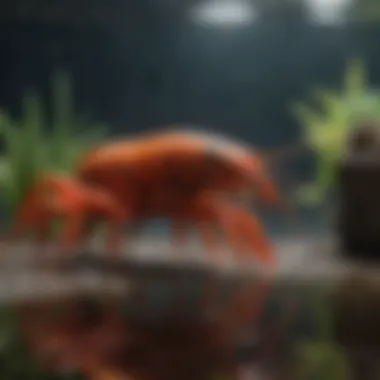
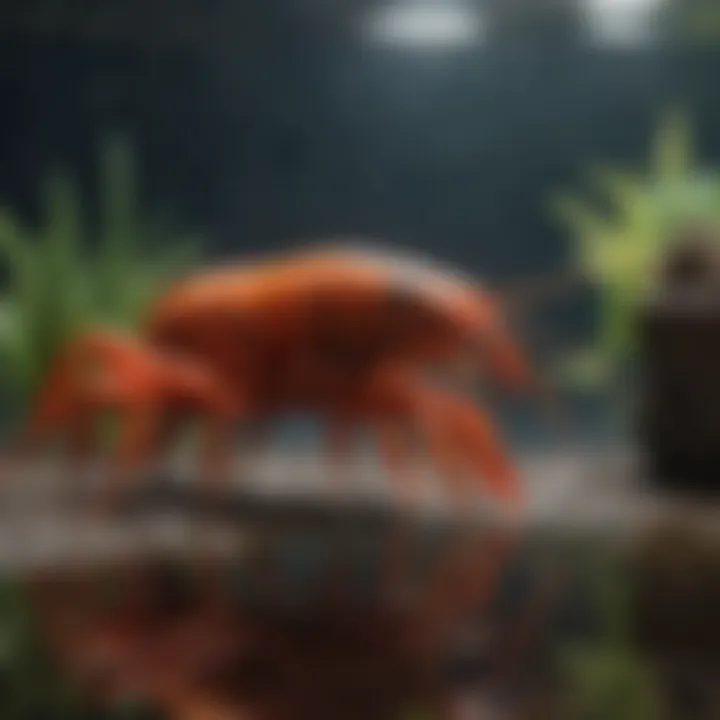
Crawfish have distinct mating rituals and reproductive strategies that are critical for species propagation. Typically, mating occurs during specific seasons, often influenced by water temperature and conditions.
The mating process involves several stages:
- Courtship Displays: Males engage in courtship behaviors such as waving their claws and digging to impress potential mates.
- Mating Position: Once a female is receptive, she and the male will engage in a specific position, which often lasts hours.
- Egg Fertilization: After mating, females carry fertilized eggs under their tails until they hatch. The duration of this period varies among species.
Monitoring these behaviors is important for breeding enthusiasts. Successful reproduction also depends on maintaining appropriate water parameters and tank conditions.
Understanding these behavioral dynamics enriches the aquarist’s experience and supports the health and happiness of crawfish in any aquarium.
Compatibility with Other Aquarium Species
Understanding the compatibility of live crawfish with other aquarium species is crucial in creating a thriving aquatic environment. As crawfish can exhibit territorial and aggressive behaviors, selecting the right tank mates is essential to ensure harmony in the aquarium. The goal is to balance the ecosystem, maximizing the health and growth of all species involved while minimizing stress and competition.
While certain fish and invertebrates can coexist well with crawfish, others can become targets of predation or stress victims. Due to their natural instincts, crawfish might show aggression towards smaller or less dominant species. Thus, aquarists must conduct research into behaviors and environmental requirements of potential tank mates before introducing them together.
Best Tank Mates for Crawfish
Choosing appropriate tank mates for crawfish can enhance the aquarium experience. Ideal companions should be resilient and have compatible environmental needs. Here is a brief list of suitable species:
- Larger Cichlids: Species such as Jack Dempseys and Oscars tend to thrive with crawfish. Their size and assertiveness help deter crawfish aggression.
- Shubunkin Goldfish: These colorful fish can withstand similar water parameters and the potential stress from crawfish.
- Barbs: Certain barb varieties, including Tiger Barbs, can coexist peacefully as their lively nature can distract crawfish without provoking aggressive interactions.
- Plecos: Commonly known as suckerfish, they can help in algae maintenance while maintaining a safe distance from crawfish.
- Giant Danios: Fast and active, they are generally able to avoid any possible aggressiveness displayed by crawfish.
However, it is important to consider the size of the tank, as overcrowding can lead to stress and territorial disputes.
Species to Avoid in a Crawfish Tank
Certain species are best excluded from a crawfish tank due to the high risk of conflict or predation. Being mindful of these species can save you from future problems.
- Small Fish: Any small species such as neon tetras or guppies are vulnerable. Crawfish may see them as potential food.
- Other Crustaceans: Introducing different types of crustaceans can lead to competition and aggression over territory and resources.
- Aggressive Fish: Species known for their aggressive nature, like certain types of bars, can challenge the crawfish and disrupt the tank's ecosystem.
- Slow-moving Species: Fish like angelfish can become easy targets if they cannot evade a crawfish's snapping grasp.
Maintaining peaceful coexistence requires careful thought into the selection of tank mates that will not contribute to stress or aggression. Prioritizing larger, faster-moving, or similarly assertive fish will help in creating a stable environment for all inhabitants. Always observe interactions closely after introducing new species to ensure ongoing compatibility and health.
Health and Disease Management
The introduction of live crawfish into an aquarium is not merely about their vibrant presence. It is equally about managing their health and understanding the potential diseases that can occur. This section discusses essential aspects of health management, focusing on the common issues, their causes, and preventive strategies. Proper knowledge in this area can lead to greater success in keeping crawfish healthy, thus benefiting the overall aquarium ecosystem.
Common Health Issues in Crawfish
Crawfish can encounter various health issues that could jeopardize their well-being. Some of the most common health problems include:
- Shell Rot: A type of bacterial infection that manifests as soft, decaying areas on the shell. Poor water quality and lack of hiding spots can lead to this condition.
- Fungal Infections: These typically develop in weakened crawfish, often due to stress factors such as overcrowding or fluctuating water parameters.
- Molting Problems: Molting is a critical process for crawfish growth. Conditions like improper water hardness or inadequate calcium levels can result in incomplete or difficult molting, causing significant distress.
- Parasitic Infections: External or internal parasites can infect crawfish, leading to reduced immunity and overall health decline. Keeping the tank clean is vital to minimize this risk.
Understanding these health concerns enables aquarists to be vigilant and proactive. Regular monitoring of your crawfish and their environment is essential to detect and address issues before they become severe.
Preventive Care and Maintenance
To manage the health of crawfish effectively, implementing preventive practices and routine maintenance is crucial. Here are some recommendations that can enhance their quality of life:
- Water Quality Monitoring: Regularly check the water parameters including pH, ammonia levels, and nitrate concentrations. Consistent, optimal water conditions are essential for crawfish health.
- Tank Cleaning: Perform routine cleanings while being careful not to disturb beneficial bacteria. Removing waste and uneaten food helps prevent harmful bacterial growth.
- Supplemental Nutrition: Ensure a balanced diet that includes high-quality pellets and natural food sources. Proper nutrition strengthens their immunity and supports healthy molts.
- Hiding Places and Decor: Provide ample hiding spaces using rocks, plants, or artificial caves. Crawfish need places to retreat, which can reduce stress and territorial aggression.
- Regular Health Checks: Observe your crawfish for signs of illness, such as lack of movement or unusual behaviors. Early detection is often key to effective treatment.
Maintaining a stable environment and monitoring health indicators can prevent many potential problems, allowing for a thriving setup.
Incorporating diligent health management practices ensures crawfish can adapt and thrive within their aquarium. This not only aids in their longevity but also contributes to a balanced and healthy aquatic community.
Conservation and Habitat Protection
As custodians of aquatic life, it is imperative to understand the impact that keeping crawfish in captivity has on their wild counterparts. The practice of maintaining live crawfish in aquariums can inadvertently contribute to the decline of natural habitats if not approached thoughtfully. Aquarists should not just focus on the maintenance of their tanks but also consider how their practices contribute to conservation efforts.
One significant aspect of this is to avoid releasing captive crawfish back into natural waters, as this can introduce diseases and disrupt local ecosystems. Instead, if you find yourself unable to care for your crawfish, seek assistance from local fish rescues or adopt a sustainable re-homing strategy. This conscientious approach safeguards both the pet and the natural environment.
Moreover, actively participating in conservation initiatives can enhance your experience as an aquarist. Supporting organizations that focus on habitat protection and rehabilitation ensures that aquatic ecosystems are preserved for future generations. Consider the following actions for better habitat protection:
- Educate yourself and others about local aquatic ecosystems.
- Support or volunteer with local conservation groups.
- Advocate for sustainable practices within your community.
Ultimately, understanding the relationship between crawfish in aquariums and their natural environments helps in making informed decisions. This awareness fosters a sense of responsibility, encouraging aquarists to contribute positively to the world while enjoying the beauty and complexity of aquatic life.
Epilogue: The Role of Crawfish in Aquatic Ecosystems
Crawfish, often viewed merely as intriguing aquarium inhabitants, hold a more significant role within aquatic ecosystems. This section elucidates the importance of crawfish and their multifaceted contributions to both the environment and aquarium community.
Crawfish as Keystone Species
Crawfish are recognized as keystone species in many freshwater habitats. Their presence is crucial to maintaining the ecological balance. By performing numerous ecosystem roles, they influence the structure and function of their environments. This includes:
- Nutrient Cycling: Crawfish consume detritus and organic matter, breaking it down into simpler forms. This process enriches the substrate of the aquarium, promoting a healthier environment for plants and other aquatic life.
- Prey for Predators: They serve as a primary food source for various fish and amphibian species. In an aquarium setting, their availability can help support the diets of these carnivorous inhabitants, fostering a more balanced ecosystem.
- Habitat Modifiers: Crawfish dig burrows in substrates, which can aerate the ground. This not only creates habitats for smaller organisms but also helps maintain water clarity and quality.
Understanding the keystone species concept underscores why at least one crawfish is beneficial in the aquarium setup. Their absence may lead to unforeseen consequences within the habitat, impacting other species.
Future Trends in Aquatic Invertebrate Care
As aquarists evolve in their practices, the care of aquatic invertebrates, including crawfish, is shifting. An increasing interest in sustainable practices has emerged, influencing future trends.
- Sustainable Sourcing: There is a growing emphasis on acquiring live crawfish through responsible, sustainable methods. This approach ensures that wild populations are conserved and habitats protected. More aquarists will need to evaluate their sourcing options carefully.
- Custom Diets and Nutrition: Aquarists are recognizing the importance of tailored diets that cater to the specific needs of crawfish. Innovations in fish food are focusing on nutritional profiles that benefit not only crawfish but the entire aquarium community.
- Research on Compatibility: Ongoing studies are refining knowledge on compatible species within crawfish environments. Research helps in identifying which fish or other aquatic organisms coexist best with crawfish, minimizing conflicts and maximizing ecosystem health.
Integrating crawfish into aquariums is not just about aesthetics but encompasses a holistic approach to aquatic ecosystem management. The implications of their role and care types signal a progressive shift towards sustainability, improved welfare of all aquatic life, and a deeper understanding of ecological interconnectedness.















